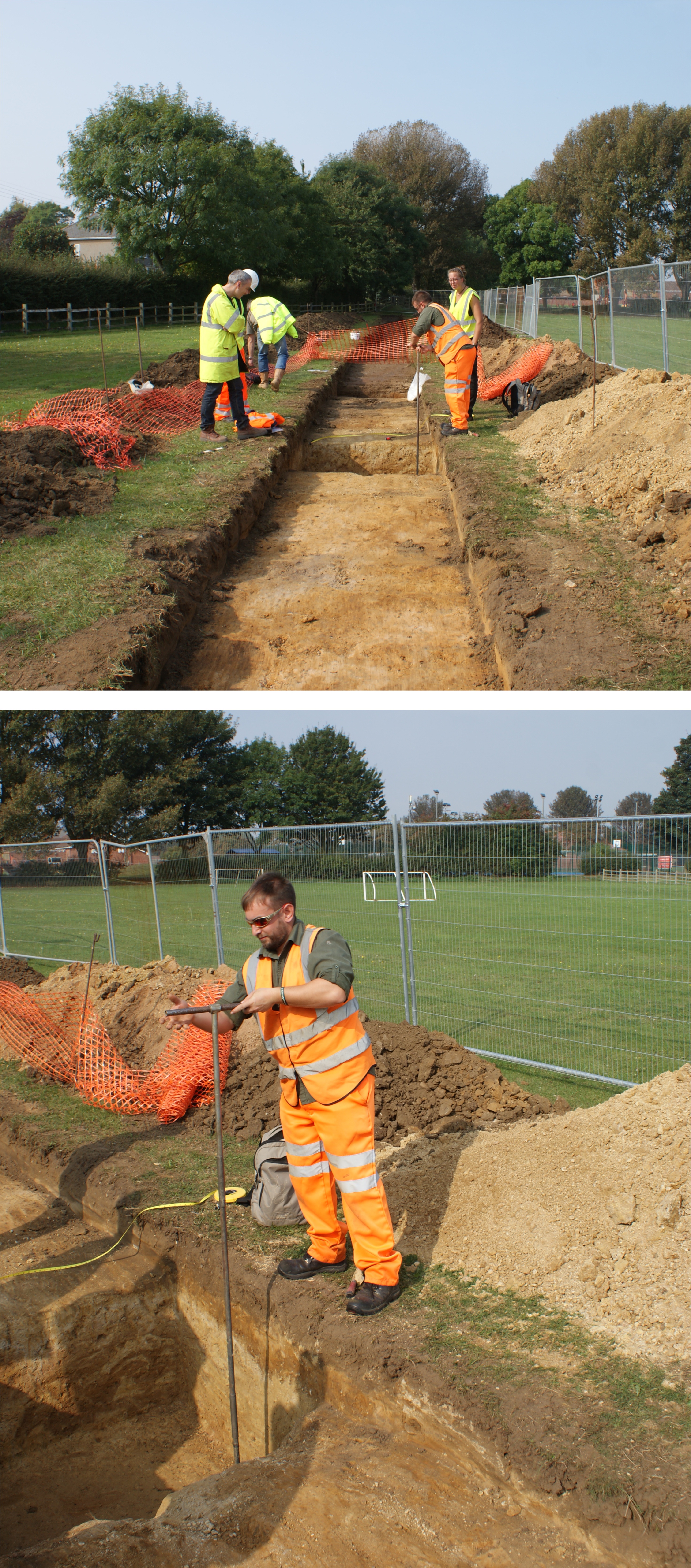
Wessex Archaeology has recently completed an excavation through the Scheduled Monument of Car Dyke (Scheduled Monument number 1004923). Wessex was commissioned by Lincolnshire County Council, working with the Heritage Consultancy Team at Mouchel, on a flood alleviation scheme at Keeble Drive, Washingborough. The flood alleviation works will involve laying of new pipes to take surface water runoff away from nearby residential areas.
The scheme presented an excellent opportunity to understand more about Car Dyke, which is thought to have been constructed around AD 125. The Dyke forms an artificial water channel running along the western fen edge from Peterborough to Lincoln; previous archaeological excavations have revealed that the water channel was approximately 15 metres wide at the top and between two to four metres deep, with sloping sides and a flat bottom. The dyke is thought to have been used to control and divert flood waters rather than a canal, with most of it now incorporated into modern drainage systems.
The flood alleviation trenching did not impact on the water channel but did allow us to examine a section through the Dyke’s southern earthen bank. Car Dyke originally had mounds of earth on either side, which would have stood up to 5 m high and up to 20 m wide; remnants of these banks survive as earthworks in fields to the east.
Our work demonstrated that the southern bank was formed from dumps of redeposited alluvium capped with clay, and that over 1 m of deposits survive beneath the current ground surface. Most intriguingly the bank appears to be contemporary with a large peat-filled ditch or channel. The peat should provide material for radiocarbon dating and allow us to confirm the assumed date of the construction of Car Dyke.
By Andrew Norton